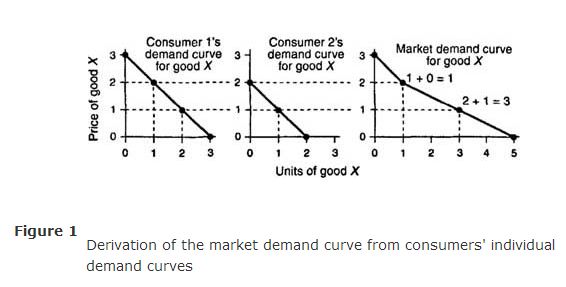Individual Demand Market Demand
The consumer equilibrium condition determines the quantity of each good the individual consumer will demand. As the example above illustrates, the individual consumer's demand for a particular good—call it good X—will satisfy the law of demand and can therefore be depicted by a downward‐sloping individual demand curve. The individual consumer, however, is only one of many participants in the market for good X. The market demand curve for good X includes the quantities of good X demanded by all participants in the market for good X. The market demand curve is found by taking the horizontal summation of all individual demand curves. For example, suppose that there were just two consumers in the market for good X, Consumer 1 and Consumer 2. These two consumers have different individual demand curves corresponding to their different preferences for good X. The two individual demand curves are depicted in Figure , along with the market demand curve for good X.

The market demand curve for good X is found by summing together the quantities that both consumers demand at each price. For example, at a price of $1, Consumer 1 demands 2 units while Consumer 2 demands 1 unit; so, the market demand is 2 + 1 = 3 units of good X. In more general settings, where there are more than two consumers in the market for some good, the same principle continues to apply; the market demand curve would be the horizontal summation of all the market participants' individual demand curves.